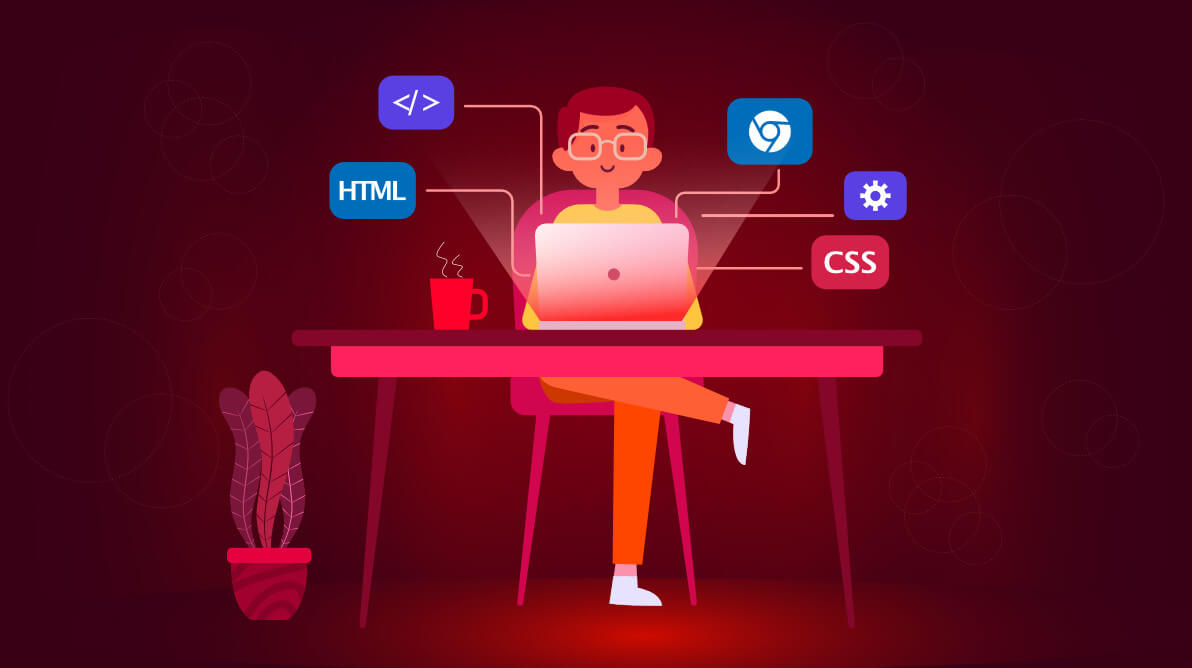Web Development 101: A Beginner’s Journey
Web Development 101: A Beginner’s Journey
The world of web development can seem like an overwhelming maze of code, frameworks, and tools. But don’t worry—everyone starts somewhere, and once you understand the basics, you’ll begin to see how everything fits together. Whether you're looking to build your own website, start a career as a developer, or just learn a new skill, this guide will help you navigate the beginner’s journey into web development
At its core, web development is the process of creating websites and web applications. It involves everything from the structure of the site (what the user sees and interacts with) to the backend (where the data and logic are processed). Web development can be split into two main categories:
Frontend Development: This is the part of web development that deals with what users see and interact with on a website. It includes everything from layout and design to animations and responsiveness. Languages used in frontend development include:
- HTML (Hypertext Markup Language): The building blocks of web pages, used to create the structure of a website.
- CSS (Cascading Style Sheets): Controls the presentation, layout, and styling of a website.
- JavaScript: Adds interactivity and dynamic behavior to a website.
Backend Development: The backend deals with the “behind-the-scenes” functionality of a website. It handles server-side logic, databases, and data processing. Common backend languages include:
- PHP
- Python
- Ruby
- JavaScript (Node.js)
Step 1: Learn the Basics
Before diving deep into complex frameworks or advanced topics, it's important to master the basics. Start by learning:
- HTML: Understand how to create simple pages and structure content like headers, paragraphs, links, and images.
- CSS: Learn how to style pages, control layouts (e.g., using Flexbox or CSS Grid), and make your website visually appealing.
- JavaScript: Grasp the fundamentals like variables, functions, loops, and conditionals. JavaScript is what adds interaction to your website, whether it’s form validation, animations, or fetching data from a server.
Once you’ve got the basics down, start building simple projects. This is where you’ll see your skills grow and learn how to apply your knowledge. Some ideas include:
- A personal portfolio website
- A simple to-do list app
- A blog page
- A photo gallery
By building projects, you’ll get a feel for how the different pieces of a website work together.
Step 3: Version Control with Git
As you start building more complex projects, you’ll want to keep track of your code. Git, a version control system, helps you manage changes to your codebase. It’s crucial for collaborating with others and keeping your projects organized. GitHub is a platform where you can store your code, share projects, and collaborate with others.
Step 4: Learn Frameworks & Libraries
Once you feel comfortable with HTML, CSS, and JavaScript, you can start exploring frameworks and libraries that will make your development process faster and easier.
Frontend frameworks/libraries:
- React: A JavaScript library for building user interfaces.
- Vue.js: Another popular JavaScript framework for building single-page applications.
- Angular: A comprehensive framework for building dynamic web apps.
- Express.js (for Node.js): A minimal web application framework for building server-side applications.
- Django (for Python): A high-level Python framework that encourages rapid development and clean design.
Most web applications need a place to store data, like user information, posts, comments, etc. This is where databases come in. As a beginner, start with:
- SQL (Structured Query Language): Used to manage relational databases like MySQL, PostgreSQL, and SQLite.
- NoSQL databases: For non-relational data storage, MongoDB is a popular choice.
Understanding how to interact with a database is crucial for building full-stack applications (apps that handle both the front and backend).
Step 6: Build Full-Stack Applications
Now that you have the basics and some experience with both frontend and backend, you can start building full-stack applications. A full-stack application connects the frontend (what the user sees) with the backend (the server-side logic and database). Common tools for building full-stack applications include:
- Node.js with Express for the backend
- React.js for the frontend
- MongoDB or PostgreSQL for the database
Step 7: Stay Updated and Keep Learning
Web development is constantly evolving, with new tools, frameworks, and best practices emerging all the time. To stay up-to-date:
- Follow blogs and communities (e.g., CSS-Tricks, Smashing Magazine, Stack Overflow).
- Participate in online coding challenges (like those on HackerRank or Codewars).
- Contribute to open-source projects on GitHub to practice your skills and learn from others.
Web development is an exciting, ever-changing field that offers endless opportunities for growth and creativity. Starting as a beginner might feel intimidating, but by mastering the basics, building projects, and continuously learning, you'll gradually build the skills necessary to create your own websites and web applications.
So, start small, stay persistent, and enjoy the journey. The world of web development is yours to explore!






Comments
Post a Comment